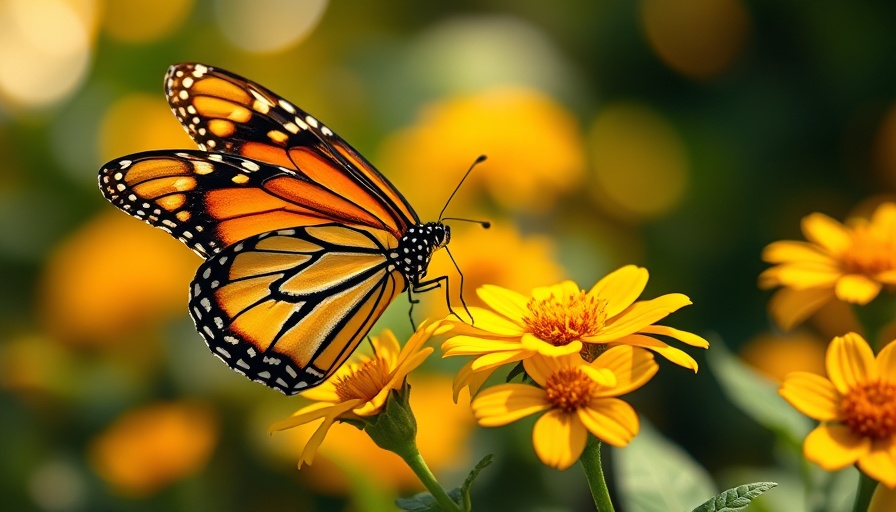
The Decline of California's Monarch Butterflies: A Troubling Indicator
Once known for their spectacular migrations and striking beauty, California's Western monarch butterfly population has reached alarming lows, with fewer than 10,000 reported this winter. This shocking count, conducted during the 28th annual Western Monarch Count, reveals just how critical the situation has become for this iconic species. With only 9,119 monarchs recorded overwintering, we are witnessing one of the lowest populations in a series of data collected since 1997. The implications of this plunge demand our attention and action.
Understanding the Causes Behind the Decline
The reasons behind this catastrophic decrease are multifaceted. Factors such as habitat loss, intensive pesticide use, and the relentless impacts of climate change are international threats to the well-being of monarchs across their migratory routes. Emma Pelton, a biologist at the Xerces Society, emphasized the alarming vulnerability of small populations to environmental fluctuations, pointing towards record-breaking heat and prolonged drought conditions as contributing factors to this year's dramatic drop.
A Glimpse Back in Time: A Population in Peril
To appreciate the gravity of the current situation, we must reflect on the past. In the 1980s, it was estimated that as many as four million monarchs could be spotted in California during the winter months. Fast forward to today, and the Western monarch population has plummeted by over 95 percent. This stark contrast highlights a severe decline, with an all-time low of less than 2,000 recorded in 2020 and a consistent yearly decrease that continues to paint a dire picture.
The Role of Conservation Efforts and Community Action
Despite the grim statistics, conservationists remain hopeful. The proposed protections under the U.S. Endangered Species Act signal that stakeholders are beginning to recognize the urgent need for policy interventions. Protecting critical habitats amid increasing threats from wildfires and climate change is essential. Moreover, community engagement and local conservation efforts have the potential to positively influence the survival of monarchs. These proactive measures can help restore habitats and provide safe overwintering sites.
Hope for the Future: Can We Make a Difference?
As we ponder this environmental crisis, the looming question is whether we can cultivate a future where these magnificent butterflies can thrive once again. The vitality of the monarch population is tied not only to climate and policy but also to individual actions. Local initiatives, such as creating butterfly-friendly gardens and supporting organic farming, can contribute to restoring habitats. Educating communities about the needs of monarchs and other pollinators can spark a movement towards more sustainable practices.
The Emotional Connection: Why Monarchs Matter
For many, the monarch butterfly evokes feelings of nostalgia and beauty. Its delicate lifecycle from caterpillar to butterfly has fascinated generations. However, it is not just their beauty that is at stake; monarchs play a critical role in our ecosystem as pollinators. Their decline represents a broader issue, a warning sign that our natural environment is in distress.
Understanding Our Ecosystem: What Is at Stake?
The plight of the Western monarch is a reflection of the health of our environment. Climate change and biodiversity loss affect not just the monarchs but various flora and fauna within ecosystems. By addressing these environmental issues, we not only work to save the monarch butterfly but also protect the diverse life forms that share our planet. In doing so, we embrace the interconnectedness of all living things, fostering a greater respect for nature and the delicate balance it maintains.
 Add Row
Add Row  Add
Add 



 Add Row
Add Row  Add
Add 

Write A Comment